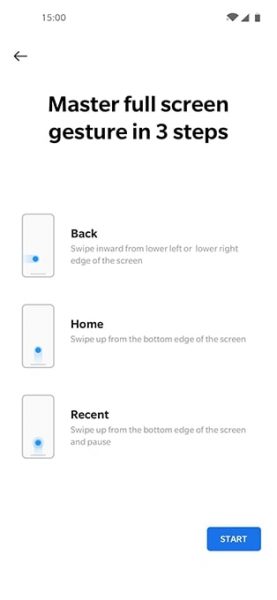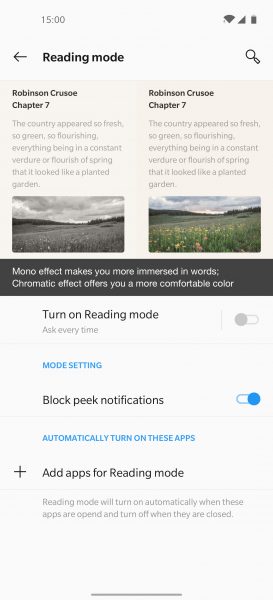For the longest time, Google’s Android operating system and Apple’s iOS have been dominating the smartphone ecosystem. It may seem like it has been a two-horse race between those two, but other Android alternatives are well on their way to challenging the frontrunners. One of those challengers is OxygenOS developed by OnePlus. Despite its up-and-coming status though, not a lot of people are knowledgeable enough to try out this OS.
This article will help you with that. In this OxygenOS crash course, you will be able to learn about the OS’s background, features, latest updates, and more. The pros and cons of the system will also be discussed together with some insightful comparisons that should help you decide wisely.
What Is OxygenOS?

OxygenOS is a mobile operating system exclusive for devices manufactured by the Chinese smartphone giant, OnePlus. It is heavily inspired by the stock Android look but the features of the two operating systems give them the much-needed separation.
OnePlus has been a steady player in the global market. However, due to the limited smartphone options it presents, larger global brands have still been standing comfortably on top of the said manufacturer. Despite that, one of the things that make OnePlus users stay is OxygenOS. It gets all the right things right and it adds in a couple more thoughtful features on top of it all.
Background
As mentioned, OxygenOS was primarily developed by OnePlus for their smartphones. OnePlus is a Chinese manufacturer that was established back in 2013 by Pete Lau and Carl Pei. As of July 2018, the brand has been in 34 countries, releasing models that regularly make it to the list of the best smartphones to buy. Their latest model and the best OnePlus phone is the OnePlus 8 Pro, which comes with the latest OxygenOS version, 10.5.10. More on that later.
Anyway, OxygenOS has a local sibling named HydrogenOS, which was made for the Chinese market. Both of the said systems were derived from the Android OS. In fact, OnePlus has been open about affiliating their latest release to its Android equivalent. Case in point, if you check out OxygenOS’s official page, you will notice how much they mention Android 10 all throughout.
Just a little trivia to cap it all: the names Oxygen and Hydrogen were actually chosen through a contest back in 2015.
Latest Updates
The first OxygenOS version was released back in 2015, and its second version was released not long after that. In the following years, OnePlus would proceed to release a new version of its OS almost twice a year. Currently, OnePlus is in its 10th incarnation which, as you may have guessed, is based on Android 10.0.
OnePlus added a lot of handy and essential features to its latest OS build. For example, OxygenOS 10 has 5G support already, and that’s just one of the alleged 50 new features and changes that the manufacturer has made in relation to Android 10. These new developments include 280 software optimizations, more gesture support, live wallpapers, dark mode, and many more customization capabilities.
The next section will dwell on some of the operating system’s latest and key features.
OxygenOS Features
OxygenOS’s features aren’t exactly unique to them. In fact, a lot of the other features of other mobile operating systems are not unique to their respective brands. More so, it wouldn’t usually take too much time before seemingly unique features become available to other systems as well.
Despite that, it’s still a good idea to know what mobile operating systems such as OxygenOS have to offer. Below are some of the key features of Oxygen that might come in very handy should you get one for yourself.
Gestures

First off are gestures. Whatever phone or smart device you may have, gestures will always be of big help. These little on or off-screen strokes can bring you right away to the apps or programs that you need. Some of the first gestures ever developed such as swiping up to open the App Drawer or double-tapping to wake the screen up are considered as industry standards now.
Smart gestures are very much supported by OxygenOS. For example, swiping up and holding the screen brings out the multitasking feature. You can also try swiping up from the right side of the screen to switch apps. Off-screen gestures such as drawing a certain letter to open specific apps are also possible.
Those aren’t the only gestures available for OxygenOS devices. Three-finger screenshots, two-finger pause/play, and many more are also possible. All you really have to do is to explore your phone.
Reading Mode and Night Mode

Most of the major operating systems have added a reading mode already — may it be in the form of blue light protection, adjusting to warmer colors, or completely desaturating the screen. In the case of OxygenOS, the reading mode comes in the form of desaturation. Basically, when you are in reading more, the phone will turn black and white to simulate how it looks like to read from a book.
In contrast to reading mode, the night mode is a new kid on the block. It was only during the last quarter of 2019 when night mode started to gain traction. With this feature, a phone’s UI will turn black for lesser intensity during evening hours. This mode is both functional and stylish, which is why the public received it quite well.
Both modes can be easily accessed through Oxygen’s top bar. Although it is not unique to this OS, knowing that OnePlus took the initiative to add these small things is a good sign that they are paying attention to the specific needs of the people already.
Ambient Display

Ambient display is perhaps the simplest yet most thoughtful feature in the world of smartphones. Basically, this feature allows you to see important things on your phone’s screen without having to actually unlock it. The ambient display usually shows the time, notifications, battery level, date, and more on the phone’s lock screen. What makes Ambient Display cool is how easy it is to access it and how customizable it is as well.
For OxygenOS, users can simply tap their phone once in order to show the lock-screen Ambient Display. You can also choose what the lock screen shows and to what extent will it show them. For example, you can choose whether you would want your notifications to be fully exposed or not during Ambient Display.
Samsung and OnePlus’ Ambient Display look closer to each other than how it is with other smartphone brands. If you are a fan of Samsung’s aesthetics, then a phone featuring OxygenOS is a good alternative, looks-wise.
Zen Mode

As fun and useful smartphones can be, everybody needs a little time off from it. Whether you’re using it for work or for personal things, stepping away from your phone still takes courage and skill. Fortunately, a lot of operating systems have made the effort to include a feature that will help people get that slight separation of man and machine.
In the case of OxygenOS, the feature is called Zen Mode. Basically, Zen Mode allows you to quiet down your phone for a certain period of time. Oxygen’s Zen has a seven-day and a 14-day option. During those days, your phone would be relatively inactive — no social media notifications, no game notifications, or anything else. Zen Mode allows users to take a breather for a while and purge themselves of technology. This feature is especially useful for those taking a vacation.
Parallel Apps

It is no secret that a lot of people use their phones these days to multitask. To a knowledgeable user, a smartphone can replace a tablet and a desktop altogether. Thanks to software and mobile developers around the globe, smartphones are continuing to push the boundaries of multitasking, and Oxygen’s Parallel Apps is one of the products of this trend.
Parallel Apps allow users to clone an application in a single device. This ingenious feature gives users the ability to use two different accounts for a single mobile app. Applications such as Facebook Messenger or Twitter can cater to multiple accounts inside one app. The parallel Apps feature takes it a notch higher by enabling a device to cater to multiple copies of the application itself. For gamers who are using multiple accounts to play, this feature offers a lot of advantages.
OxygenOS’ Parallel Apps feature was introduced back in 2017. Among all the features discussed so far in this article, Parallel Apps is perhaps the most unique one to Oxygen.
How to Install OxygenOS?
Currently, OxygenOS is only available for OnePlus phones, which means that if you want to experience the said mobile operating system, you would need to get yourself a phone from the said brand. Right now, OnePlus has five phones in the retail market and you can get one of those. To be exact, the OnePlus online store has OnePlus 7T, 7 Pro, 8 Pro, 7T Pro, and OnePlus 8.
OxygenOS recently released its 11th version so this may be a good time to jump in and experience Android 11 already. You can get the Beta 1 build of the said OS from OnePlus forums. If you’re not in the mood to sift through the forum, here are the direct download links for OnePlus 8 and for OnePlus 8 Pro. Here’s is how you can actually install it:
- Go to the File Manager and look for the downloaded file.
- Long-press the file and click on the three vertical dots on the side (action overflow menu).
- Select Cut.
- Go to your phone’s Internal Storage and Paste the file in the root directory folder.
- Head to Settings > System > System Updates.
- Tap the gear icon and then press Local upgrade.
- You will see the file that you pasted earlier in your root directory so all you have to do is to click that to start the system upgrade.
- Press Install and you should be good to go.
To verify if you have the right version of the operating system, search for “About Phone” on your settings and check if the build number has the corresponding number as the OS version you downloaded. OnePlus phones can be very easily upgraded if you know what you’re doing.
Pros and Cons of OxygenOS
Our Verdict
OxygenOS is positioning itself as one of the best alternatives to Android in the market. However, if OnePlus won’t start innovating its mobile operating system, it will remain the way it is: just an alternative. The good news is, the OS is not bad at all so there is hope that a little push would do it a lot of good.
PROS
- The fresh operating system that can give you a break from Android or Apple.
- Parallel Apps is a unique feature.
- It has everything that you would often look for in an operating system.
CONS
- All of the updates rely on OnePlus’ development team.
- It’s exclusive only to OnePlus phones.
Comparisons
Mobile operating systems are never safe from comparisons. Whether it’s the good old Android vs Apple debate, iOS vs iOS alternatives, or two Android-based systems being pitted against each other, there will always be things to compare.
In the case of OxygenOS, the rightful rivals are One UI and the Stock Android OS. In terms of features and build type, these three closely resemble each other so it would be great to see how they stack up against each other.
OneUI vs OxygenOS
OneUI is Samsung’s very own Android skin. This particular OS is one of the reasons why Samsung has been at the top of the Android game for the longest time already. However, despite the seemingly invincible persona, OneUI still has a crack in its armor that OxygenOS can pounce on.
When all is said and done, Samsung phones are known to be able to do more than what other devices can offer. In terms of features, high-end Samsung phones would definitely trample OnePlus devices. However, if you are to compare OxygenOS with budget OneUI devices, the former actually has a good chance.
If you’re looking for faster updates, you would want to go for OxygenOS. If you are conscious about the brand and the premium that Samsung gives, then OneUI is the better choice. Either way, performance-wise, OxygenOS can stand toe to toe with the ones in blue.
Stock Android vs OxygenOS
Now, this is an interesting comparison because OxygenOS is actually derived from Stock Android. However, Oxygen is not exactly a carbon copy of the Stock Android. In fact, one could argue that Oxygen improves on what Stock Android lacks.
Looks-wise, OxygenOS would appear a little older than Stock Android and that’s because the former features older icons. But if you’re after the features, OxygenOS has a really good case to build against Android. Oxygen would offer you more than what Stock Android can, and that is a fact.
If you’re looking for something original, go for the Stock Android. If you’re looking for something that literally exceeds the basics, OxygenOS is the right choice to make.
Final Word
OxygenOS is the official bet of Chinese giant OnePlus in the mobile OS industry. It is loosely based on the Stock Android OS and continues to improve its overall competence over the years. Oxygen is a relatively young OS that should continue to see growth in the future. Right now, it is thriving just by adding features that people need but it would be great to see its developers try to come up with original ideas as well.
